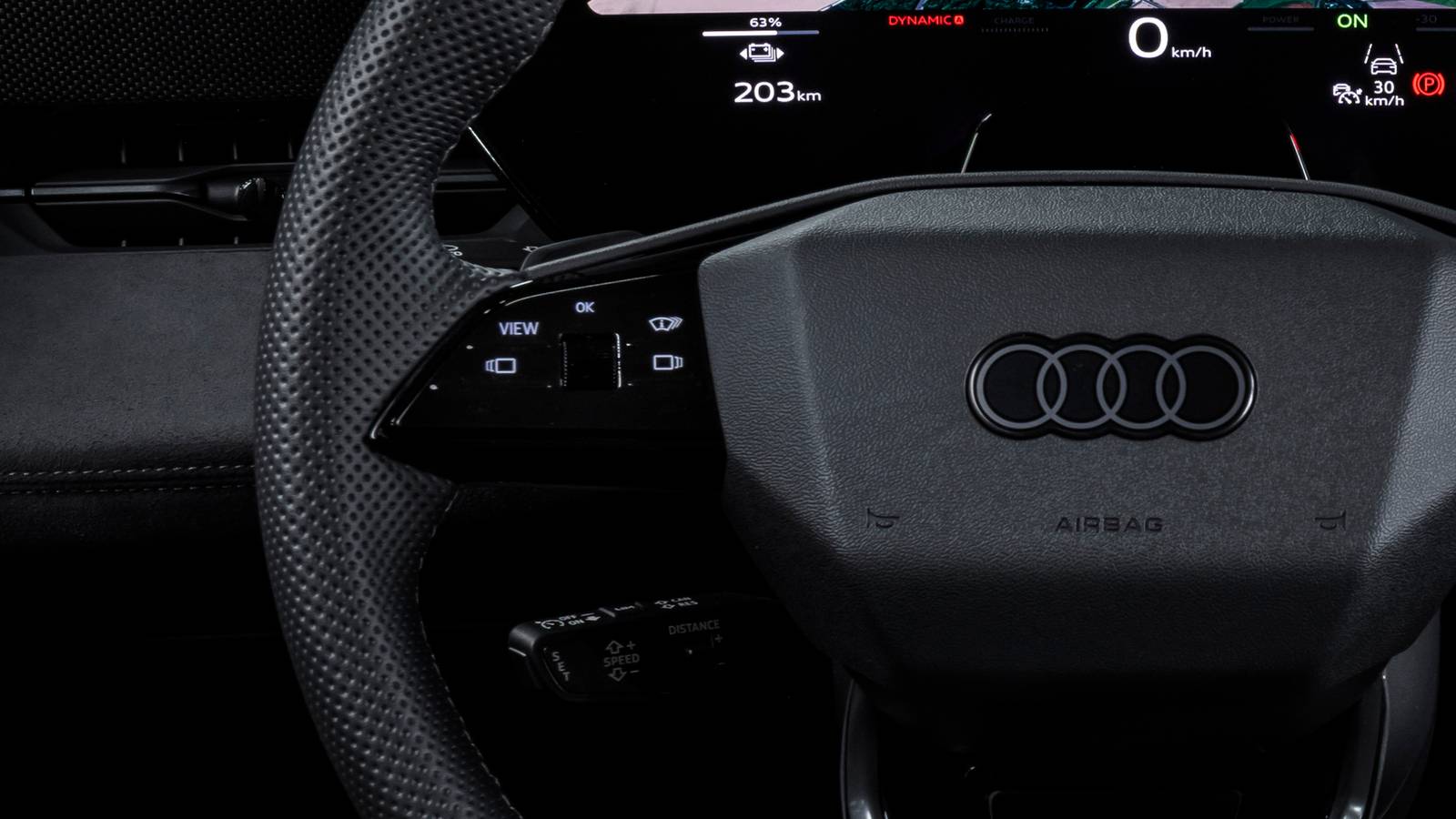Audi has gravitated towards sliders, screens, and fake buttons in its cars, but that’s all about to change. Praise be, the automaker is going to put actual controls back on its vehicles. This change-up won’t be relegated to some future model refresh, either. Audi is making it urgent, replacing major touchpoints on vehicles less than a year old in some cases to do it. The reason why is a good one.
Five vehicle lines are getting the change this year, in Europe, at least. The A5, Q5, A6, A6 e-tron, and Q6 will all receive a new roller controller on both the left and right-hand side steering wheel interface pads. These replace touch-sensitive up and down sliders on the models, which are already quite new. The Q5, for example, just went into production earlier this year.
Why the sudden change? Customers don’t like sliders. “The reason for the change is feedback from customers who have increasingly requested operation with physical controls,” an Audi spokesperson told Motor 1.
It’s next sports car will be the first with the physical-focused interior.
For Audi to make this change so quickly and for so many models, the feedback must have been deafening. Audi would have had plans to use these components for years, and replacing them would take significant time and money.
It turns out that different markets have very different feelings on the preference for physical or virtual buttons. In China, the world’s largest new vehicle market, the preference is for haptic controls and touchscreens. A post earlier this year from VW China Board Member Ralf Brandstätter said that new buyers there were under 35 and wanted AI, connected cars, and smart cockpits, while customers in Europe are 20 years older and want a tactile experience and long-term reliability.
Volkswagen, which is the parent of Audi, has also started moving back to touch. The automaker has been adding thumb buttons back to its models like the Tiguan to replace virtual controls.
Other automakers, including Hyundai and Genesis, have committed to keeping physical controls alongside high-tech features. They found that it’s what customers in their major markets wanted.
New crash test rules are also pushing back on touchscreen controls. The European New Car Assessment Program, called Euro NCAP, has said cars without buttons, stalks, or dials for key safety features will get lower scores. Those controls include turn signals, hazard lights, wipers, and the horn, though sadly they don’t apply to volume or climate control functions.
“The overuse of touchscreens is an industry-wide problem, with almost every vehicle-maker moving key controls onto central touchscreens, obliging drivers to take their eyes off the road and raising the risk of distraction crashes,” said Euro NCAP director of strategic development Matthew Avery. “New Euro NCAP tests due in 2026 will encourage manufacturers to use separate, physical controls for basic functions in an intuitive manner, limiting eyes-off-road time and therefore promoting safer driving.”
Most automakers are removing physical controls from cars and replacing them with digital touchscreens. Here’s why Rolls-Royce isn’t doing that.
There are plenty of reasons to do it, but Audi is doing it and that’s what matters. No word on when the new models with their new controls will arrive at dealers.
Source: Motor1
We want to hear from you! Share your opinions in the thread below and remember to keep it respectful.
Your comment has not been saved
This thread is open for discussion.
Be the first to post your thoughts.












